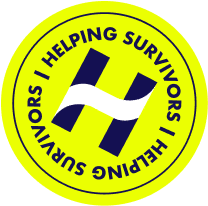What Is Consent?
Consent is the active agreement between participants to engage in different types of sexual activity. Learn more about the core elements of consent, when someone can’t consent, and how to get help if you feel your sexual boundaries were violated.


Author: Kathryn Kosmides
Survivor Advocate
Home » Consent
- Consent in a sexual context means actively and freely agreeing to engage in specific sexual experiences or acts with another person. It must be clear, coherent, continuous, and freely given, without any form of pressure or influence.
- Consent should be enthusiastic, meaning it involves an excited willingness to participate in sexual activities. If you are engaging in sexual activities in a healthy way, all parties should be excited and happy to be engaging in the experience.
- Without consent, sexual activity becomes sexual assault or rape. Whether boundaries were crossed or the person could not consent due to being under the influence, or any other reason why consent was withdrawn, having your consent violated can be a traumatizing experience. There is support available including hotlines, nonprofits, and support groups.
It is important to understand what consent means. Consent in a sexual context means actively and freely agreeing to engage sexually with another person. It lets someone know that sex is wanted. Sexual activity without consent is rape or sexual assault.
Prior to engaging in sexual activity, it’s important to ask about your partner’s comfortability and desires. When engaging in sexual activities, you should establish boundaries by determining what you want or don’t want. Both individuals need to agree to sex—every single time—for it to be consensual.
Planned Parenthood has developed an acronym for determining when consent is established:
Freely Given
Consent is freely given when it is a choice you make without pressure, manipulation, or being under the influence of drugs or alcohol.
Reversible
Consent is reversible. Thus, you or your partner may change your minds about sex at any time, even after starting to engage.
Informed
You can only consent to something that you are fully informed about. If someone says they will use a condom and then doesn’t, consent is not fully established.
Enthusiastic
Consent applies to activities that you truly want to perform, not those that you feel pressured or expected to perform.
Freely Given Specific
Saying yes to one thing does not mean you have said yes to other things.
Consent can’t be implied by past behavior or where things lead. Consent must be clearly communicated, and there should be no question or mystery as to whether an agreement has been made. There are laws about who can and can’t give consent. Those who are drunk, high, passed out, or underage can’t consent to sex.
Without consent, sexual activity becomes sexual assault or even rape. More than 1 in 3 women and 1 in 4 men have experienced sexual violence involving physical contact during their lifetimes. Costs associated with rape are high—totaling at approximately $122,461 per victim, including medical costs, lost productivity, criminal justice activities, and other costs.
- What are the core elements of consent?
- If you are not sure where to turn, RAINN can help.
- What Does Consent Look Like?
- What Does Consent Not Look Like?
- Limitations of Giving Consent
- What is Enthusiastic Consent?
- Without Consent, it’s Sexual Assault
- What to do if You’ve Been Sexually Assaulted
- Want To Speak With A Lawyer?
What are the core elements of consent?
There are key factors that constitute consent. These include:
Clear
Consent must be clear. Both individuals must be willing and able to give permission.
Coherent
Individuals must not be under the influence of drugs or alcohol. If one of the partners is asleep or otherwise not fully awake and functioning, there is no capacity for consent.
Continuous
If one of the partners wants to stop activity at any point, the other partner must respect their wishes. Thus, consent must be maintained throughout the entire activity.
Freely Given
Consent must be freely given and not extracted through threats or other forcible means. There can be no coercion.
If you are not sure where to turn, RAINN can help.
Call 800-656-HOPE (4673) to talk confidentially with a trained professional from RAINN.
They can put you in touch with local resources and organizations that can help in your healing journey.
What Does Consent Look Like?
At its heart, consent involves deep and clear communication. There is a willingness of both partners to perform sexual activities. Consent must occur every time sexual acts are instigated; just because a sexual activity occurred in the past does not mean that it is permissible again in the future. Consent includes:
- Asking permission when engaging in intimate activity
- Confirming interest before sexual intimacy or touching occurs
- A verbal “yes” to activities
- Checking in regularly to make sure you are on the same page
- Staying committed to the activities willingly
- Encouraging the activity and maintaining contact and enthusiasm
- Giving positive verbal feedback when comfortable with a sexual activity
- Open dialogue with your partner about desires, needs, and comfort level of sexual activities
- Letting your partner know you can stop at any time
Consent is a clear and unequivocal “yes” to sexual activity.
What Does Consent Not Look Like?
When considering sexual activities with a partner, it’s important to realize what is not consent. Consent is not:
- Continuing sexual activity when your partner says “no”
- Sexual activities with a partner who is unresponsive, asleep, unconscious, intoxicated, or incapacitated by drugs
- Believing that wearing certain clothes or performing actions like flirting is permission for sex or sexual activities
- Someone under the age of majority (18) saying yes to sexual activity
- Refusing to stop when your partner changes their mind about consenting to a sexual act
- Assuming you have permission for a sexual act because you’ve done it in the past
- Continuing with a partner who is disengaged, nonresponsive, or visibly upset
When you realize that consent has not been given for sexual activity, it is important to stop all actions related to sexual activity with the person. Otherwise, your actions could constitute sexual assault or rape.
Limitations of Giving Consent
Situations where someone cannot freely give consent include:
One or both individuals are under the influence of alcohol
An individual is underage according to state and federal laws
A person is asleep or unconscious whether naturally or from drugs/alcohol
There are drugs involved, and the person can not make informed decisions
Also, if there is any threat involved, there is no consent. Freely given consent requires a willingness to engage in activity without any pressure or force.
What is Enthusiastic Consent?
Enthusiastic consent involves an excited willingness to perform sexual activities. It may include:
- Asking permission before changing the type or degree of sexual activity with phrases like, “Is this okay?”
- Confirming that there is reciprocal interest before initiating physical touch.
- Letting your partner know that you can stop at any time.
- Periodically checking in with your partner, such as asking, “Is this still okay?”
- Providing positive feedback when comfortable with an activity.
- Explicitly agreeing to certain activities, either by saying “Yes” or using another affirmative statement, such as, “I’m open to trying.”
- Using physical cues to let the other person know you’re comfortable taking things to the next level.
There are physiological reactions that can occur during sexual activity, including an erection, lubrication, arousal, or orgasm. These are involuntary, meaning your body might react one way even if you are not consenting to the activity.
In some cases, individuals who pressure others into sexual activity may use these physiological responses to maintain secrecy or minimize a survivor’s experience, potentually using phrases such as, “You know you liked it.”
A physiological response does not mean that you consented to what happened. If you have been sexually abused or assaulted, it is not your fault.
How to ask for enthusiastic consent
When you are interested in engaging in sexual activities with a partner, it’s important to gain their full consent. You may be worried about spoiling the mood, but ensuring that they are fully on board with performing sexual activities is necessary. You can use certain phrases to make sure that communication is clear and that you obtain the appropriate level of consent needed to move forward. Here are a few ways to communicate with your partner:
- “I would love to _____ to/with you. Is that something you’d like?”
- “Is it okay if I _____?”
- Forcing a victim to perform sexual acts, such as oral sex or penetrating the perpetrator’s body
- “Would you like it if I _____?”
- “It feels good when you/we _____. Do you want to do that?”
- “Do you want me to stop?”
Having clear communication that emphasizes choice and does not put pressure on the person ensures that there are no questions later. Developing a strong level of communication that emphasizes trust and respect not only ensures that consent is established but also helps to further develop your relationship with the person.
If both partners understand that a strong relationship with mutual respect and trust is important (over and above sexual activities), it can help to further grow and deepen the bond between two people.
Without Consent, it's Sexual Assault
Sexual assault is any type of sexual activity or contact, including rape, that happens without consent. It may include:
- Any type of sexual contact with someone who cannot consent, such as someone who is underage, has an intell ectual disability, or is passed out and unable to respond
- Sexual contact with someone who does not consent
- Rape
- Attempted rape
- Sexual coercion
- Sexual contact with a child
- Fondling or unwanted touching above or under clothes
Sexual assault may also be verbal, visual, or noncontact. It includes anything that forces a person to join in unwanted sexual activities or attention. Examples may include:
- Voyeurism or peeping
- Exhibitionism
- Sexual harassment or threats
- Forcing someone to pose for sexual pictures
- Sending someone unwanted texts
Experiencing sexual assault can be very harmful to an individual and can lead to physical, emotional, or mental health problems.
What to do if You've Been Sexually Assaulted
If you’ve been sexually assaulted, it’s important to realize that it is not your fault—you are not to blame. Take steps to seek support and justice for your sexual assault.
Safety First
After experiencing a sexual assault, your mind and body may be very uncomfortable. You may be in pain or reeling from the emotional effects of the assault. Seek a safe place, such as a friend’s house, the police station, or a hospital, and find someone who can help you.
Seek Medical Attention
After a sexual assault, it’s important to seek medical attention. A doctor can examine you and make sure that you haven’t been seriously injured during the assault. You may also want to use a rape kit for documenting evidence of the assault.
Report to Local
Authorities
The sexual assault statutes of limitations vary widely by state. In some cases, it may be reportable only for a certain period of time; and in other states, there is no statute of limitations.
Speak with a Trained Professional for Help
Individuals at the National Sexual Assault Hotline are educated in sexual assault and can help you get the assistance you need. You can contact them at 1-800-656-HOPE (4673).
Continued Support Groups
After the assault has occurred, you can continue to get help through licensed support groups. There are hundreds of groups available that provide assistance for recovering victims, either online or locally. A list of online resources for survivors is provided by the National Sexual Violence Resource Center.
Want To Speak With A Lawyer?


